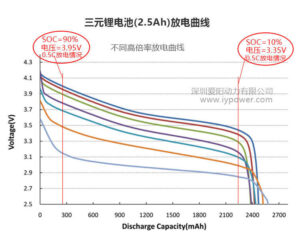Automatic sorter mainstream – cross belt sorter
1.1 Concept and composition of cross sorting
Cross-belt sorting is the use of linear power driven small teams along the ring track high-speed movement, labeled goods through the scanner read code for sorting, suitable for e-commerce, clothing, express industry and other large and medium-sized venues. Structurally, the cross sorting belt is composed of four parts: control device, sorting device, conveying device and sorting road.
1.2 Features of cross sorter
Cross sorter using traditional mechanical design, the principle is simple, the structure is relatively strong, the sorting action is gentle and accurate. The advantage is that when the order quantity is large enough, the sorting efficiency is the highest, and it is suitable for all kinds of large and medium-sized goods, so it is favored by customers and has become the mainstream of sorting equipment. But also has disadvantages: covers a large area, and the ground smoothness requirements are high; The cost is high, the transmission module is easy to damage, the maintenance cost is also high.
1.3 Bag supply mode of cross belt sorter
(1) Automatic package supply
The automatic packet supply system consists of three segments, namely, the import segment, the acceleration segment and the packet supply segment. Among the three methods of package supply, automatic package supply has the highest efficiency, but it also has high requirements on the corresponding materials, the shape of goods and the orientation of labels, and the package of goods must be separated individually before sorting.
(2) Manual semi-automatic package supply
On the basis of the supply section of the automatic supply system, a manual delivery platform is added, which is carried out by multiple staff at the front end. Due to the different number of personnel and operation proficiency, the supply efficiency is relatively not very high, and the fluctuation range is large. However, manual semi-automatic package supply has lower requirements on front-end goods and does not limit label orientation.
(3) Manual supply of packages
Manual package delivery is completed by the staff adjusting the orientation of the package label and placing it in the center of the car. Operation efficiency is affected by the operating speed and the idle degree of the car, and because of manual delivery, the running speed of the car is limited, and the overall efficiency of the sorting machine is low.
At present, the efficiency of cross – tape sorters is mainly limited by the difference in front – end delivery mode. Therefore, the industry is mainly based on manual packaging, which can ensure that the label of each product is aligned in the specified direction, effectively reducing the rate of misselection, but the efficiency also decreases.
Cross sorting application case study
(1) To ten miles of castle — Devorchen
On the basis of the manual sorting mode of the belt conveyor in Yantong Shilibao Branch, Devorxing cross-belt sorting machine is adopted, which greatly improves the sorting speed and accuracy. The device uses barcode scanning to improve the high error rate caused by manual sorting, and the sorting speed is increased from 12,000 items in 3.5 hours to 30,000 items in 1 hour.
(2) Suning Logistics Center — Dema
The cross belt sorting system of Dema mainly includes parts supply system, sorting host system, next parts system and control system. Dema invested heavily in Huzhou base to build a set of 156 cross-belt trolley sorting machine, the main line of the maximum noise is only 65 decibels. In the second phase of Suning Yuncang Shanghai Operation Center cooperated by Suning and Dema, nearly 5km of transmission lines are connected in series. Cross-sorting technology runs through the whole process from packaging to distribution, and the package processing capacity reaches 30,000 pieces per hour.
New sorting mainstream – AGV
2.1 Concept and classification of AGV
Agvs, also known as AGVs, are transport vehicles equipped with electromagnetic or optical traction devices to move automatically along a specified route. Their route is usually controlled by computers. According to the guidance mode, AGV can be divided into electromagnetic, magnetic, inertial, laser and visual guidance; According to the driving mode, AGV can be divided into single wheel drive, differential drive and all-round drive; According to the transfer mode, AGVs can be divided into forklift, rail, traction, load lift, picking and robot.
2.2 AGV sorting characteristics
AGV sorting robot can continuously sort goods in large quantities, and has a lower sorting error rate than cross sorting machine. In the whole sorting process, the AGV sorting operation can be basically unmanned. When one link fails, it only needs to be removed for repair, and the other parts can continue to realize the operation.
2.3 Analysis of AGV Application Cases
(1) Lidarang “Minions” — Shentong, postal, Jingdong sorting center
Zhejiang Lidarang Robot Company was founded in 2016 and started partnership in 2017. The main reasons for the large increase are the use and promotion of e-commerce warehousing AGVs and the application of outdoor port AGVs. With more than 40 invention patents, Lihuang, guided by two-dimensional code, has been deployed in 5,000 units across the country, serving the various express sorting centers of STO, Jingdong and Post.
The advantage is to achieve the maximum sorting efficiency with the smallest floor area, which can be non-stop sorting for 24 hours and effectively reduce the logistics cost. “Charge for 5 minutes, run for 4 hours”, is also an important feature favored by many express companies.
(2) Road innovation – famous Amoy department of e-commerce home warehouse
Founded in 2015, Road Innovation is committed to the development of automated intelligent warehousing systems and has nearly 9 patents. The storage system is mainly composed of several AGV cars. Visual guidance is adopted to realize the sorting shelf to the person or the workbench according to the system instruction. It can be customized according to customer needs and warehouse conditions.
The company received millions of yuan of financing in the angel round, and in January this year, JD Group led the investment of 60 million yuan of A round of financing. For different business scenarios, Road Innovation has launched four series of intelligent storage robots, which now serve Jingdong, Gome and other well-known enterprises in the industry.
(3) Express Warehouse — JD.com, Vipshop, Best, Cainiao Tmall warehouse
Founded in 2014, Kuaicang takes “becoming the best practitioner of intelligent warehousing” as its main strategic goal, and cooperates with Jingdong, Vipshop, Best and other heavyweight customers, effectively realizing the business of “goods to people”. In the sorting process, the mobile robot sends the shelves to the workstation, completes the unloading of the specified goods under the guidance of the system, and then sends the shelves back to the storage area. In addition to scanning code and packing, other links of the entire order system do not require employee intervention.
In August 2014, Kuaicang completed angel round financing of 10 million yuan; In October 2015, completed A round of financing of RMB 40 million; In March 2017, it obtained another 200 million yuan of financing and became the most valued unicorn company in the industry under the help of SoftBank and Ali.
(4) Other enterprises
In addition to the above three AGV application cases, there are many other examples of excellent application of AGVs in China, such as Beijing Geek+, which serves domestic customers in garment, medical, industrial and other industries; Shenzhen Oukai, AGV supplier recognized by Foxconn, Panasonic, Midea and Gree; Siasun robot with the most complete product line; Qian Mo robot under Hikvision; Vision navigation pioneer Sui Matsu et al.
3. Cross sorting and AGV comparison
3.1 AGV can realize resumable data from breakpoint
AGV operation is a parallel mode. In the application process, all robots can be scheduled through a system. If a single machine is damaged, it will not affect the normal work of other robots. Relatively speaking, the cross sorting machine is used by the traditional series mode, in the operation process if a fault occurs in a link, the whole system will stop running, seriously affecting the work efficiency. And if you want to solve this problem safely and efficiently, you have to add equipment.
3.2 Different Service Objects
As an innovation of the traditional sorting model, AGVs can realize a series of sorting operations in a small area, which can serve customers in first-tier cities with expensive rents. Moreover, AGVs can be set up with many destination compartments, which effectively improves the sorting efficiency for express companies that send to different places every day.
The cross-belt sorting machine needs a large area of the warehouse to realize its operation, and its service object is limited to suburban customers in first and second-tier cities or customers in third, fourth and fifth-tier cities with cheap rent.
3.3 Cross sorting cannot be completely replaced
Affected by the number of machines, the AGV handling speed is constant, and the sorting efficiency of the cross sorting belt can increase with the increase of the order quantity. When the order volume is large enough, the cross sorting belt speed is significantly higher than the robot. Agvs have great requirements on the weight and volume shape of goods, and their operational efficiency is limited. Therefore, in some warehouses with large orders, cross sorting is still the first choice of customers.





